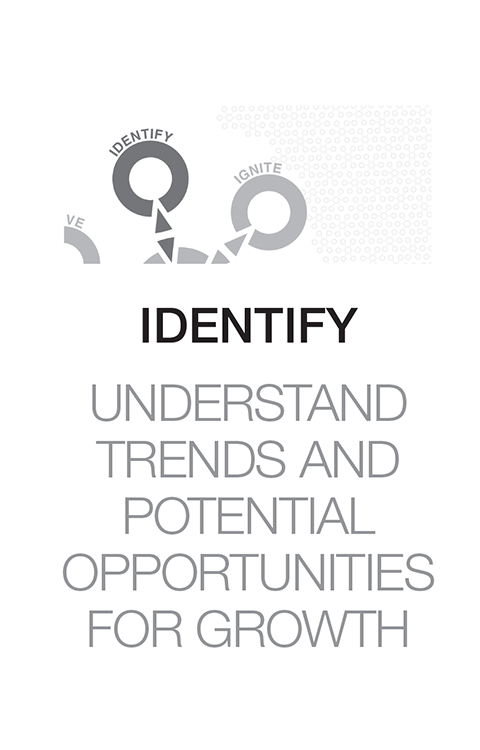‘So, Natalie, what you are saying is that you don’t think we should be investing any more money in this business?’ said a senior leader, a slight smirk on his face. It was the late 1990s and the pre-paid mobile phone was just starting to gain momentum. I was in my late twenties and a junior strategic analyst, in my first proper corporate job. Who was I to say what the future held? I could feel the heat rise in my face as I told my senior managers what I thought. The market was changing fast and we needed to look beyond our phone card competitors to pre-paid mobile offerings and voice-over internet protocol (VoIP), both of which were still emerging as disruptive technologies. What was I expecting, a positive response?
Due to a changing regulatory environment, the business models underpinning telecommunications were being reinvented. It was a time of great discontinuity – the convergence of information technology, telecommunications and content – and the way people interacted online, although only early days, was starting to merge.
My role was to spend time networking, going to conferences, discovering new trends both social and technological, that the department should be aware of so that we could adapt our products and services to a changing environment. It was growing rapidly; new people were being hired and there was a lot of enthusiasm and activity. The leadership was investing multi millions into the development of a new card technology platform that allowed customers to make calls by copying numbers from their phone card into their landline phones or payphones.
Looking out over the horizon I could identify lots of opportunities for the company across the landscape of telecommunications and mobile technology, which I largely believed were being ignored by senior leadership.
Leaving the meeting, I was concerned. I walked back to my desk and looked at my computer screen. Why couldn’t they see it? Why did they hire me to scout for new opportunities only to not listen to what I had to say? I sat there for a few minutes wondering what to do, and then I thought, ‘Well, if they can’t see it, I can, I need to get out of here!’
I started to browse the corporate intranet for jobs in other parts of the company and, after a while, I found one that looked interesting, in a small and obscure department that focused on internet technology. I thought, ‘Now, here is the future.’ I applied for a role heading up competitor intelligence and strategy and, after being interviewed, got the role and moved jobs. Within months, quicker than I had anticipated, there was a mass exodus of staff leaving the card department as it started to contract. The millions that had been spent on a technology platform became redundant, as competitors, both internally and within the broader market, made card services, and its nearby pay phone department, largely obsolete.
This story can be replicated many times over, in different industries, and at different times, as new technologies start to disrupt the status quo. In countless organisations there is an underlying belief that the competitive dynamics of the industry in which they operate are stable and that competitors are very similar entities following the same rules. This is just not the case anymore. A current example is the explosion of organisations such as Uber and Airbnb who have broken the rules of competition in transportation and accommodation. Both own no tangible assets – fleets of cars or hotels – and have transformed their respective industries.
My story was from the late 1990s. Discontinuities and disruption are happening at a faster pace now, so we need to be individually ready to identify what is going on, whether we are working inside an organisation or for ourselves. Like a submarine under the surface of the sea, we need to keep our eyes and ears open to the weak signals that are emerging and be ready to act.
I have told this story to illustrate the importance of our ability to be open and curious so we can identify opportunities, the subject for this chapter. Identify is about the ability to notice where gaps are arising that could give opportunities for ideas that could result in new products, services, processes, business models or ways of working.
The identify skill set is about being future-orientated and having the ability to spot areas that could be fertile for change. It is about being able to visualise the future – such as understanding emerging technologies that could cause industry disruption or being able to make sense of social attitudes and trends that are changing the buying behaviour of customers.
From a leadership perspective, it is the strength and confidence to focus direction so that you know where to place your effort and energy on areas that have strategic importance.
From the data that we have gathered across the world, the identify skill set is uniformly weak across many types of organisations and individuals. Why? Largely because being good at identification means deviating from day-to-day business activity and short-term results orientation. It means thinking differently, more expansively and, ultimately, if there is to be action, changing direction. This is often very hard to do.
Identifiers, those who have high confidence in this area, are often misunderstood in organisations. They can see ahead, sometimes too far, so others do not take them seriously. Or, at best, others find them interesting but not relevant to what needs to be done today. If organisations are to be serious about developing entrepreneurial talent, then encouraging identifiers and creating a culture that encourages these skills needs to be seriously nurtured and developed.

